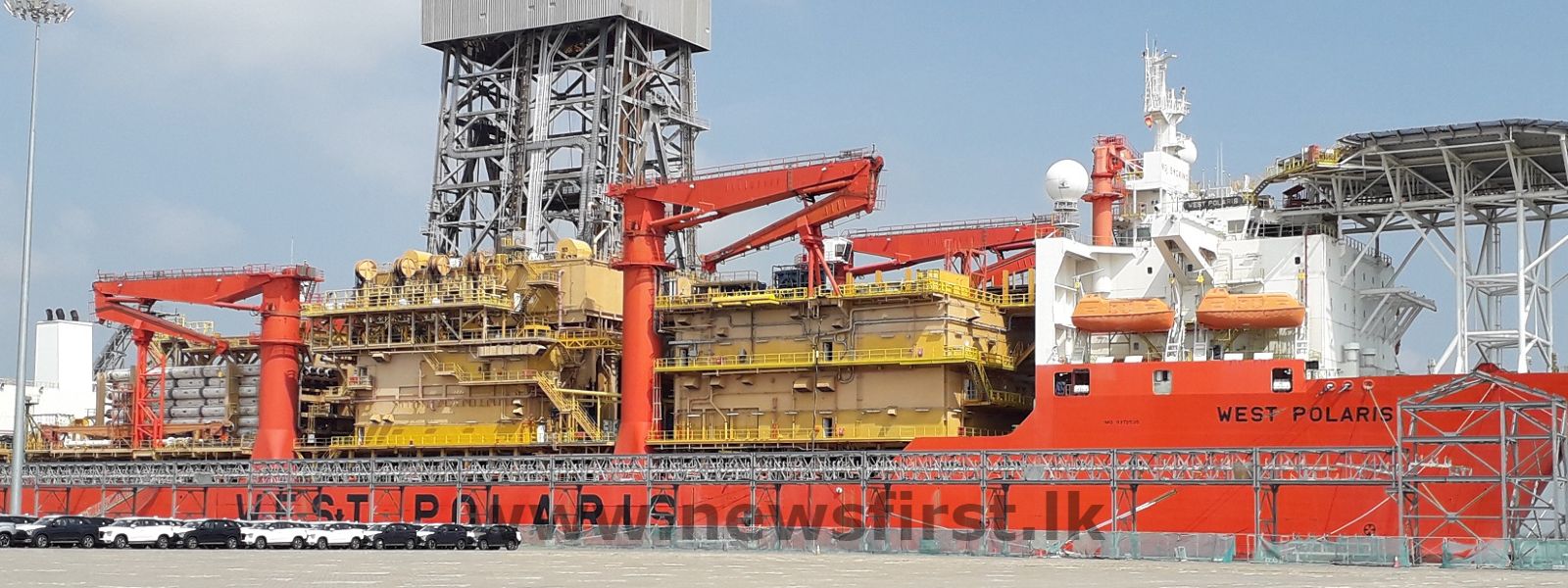.webp)

Hambantota port responds to fire onboard Drill Ship 'West Polaris'
Hambantota (News 1st); The Hambantota International Port Emergency Response Unit (ERU) together with the port’s Quality, Health, Safety & Environment Dept. (QHSE), and Port Control, responded to a fire that occurred onboard the drillship “West Polaris," on Tuesday, 15th evening.
The ship’s crew had alerted Port Control for assistance in dousing the sudden fire that had broken out in the ship's emergency generator room.
The ERU’s fire trucks arrived on the scene within minutes of being notified, assisting the crew to quickly contain the fire with charged fire hoses.
The respective ERU teams brought the fire fully under control within 33 minutes of their arrival.
They were able to prevent serious damage to the ship, or its surrounding area.
“The joint effort of this venture reflects professionalism and assurance to HIP port users and stakeholders of optimum safety and proactive response to unforeseen events related in maritime operations,” said Tissa Wickramasinghe, COO of HIPG.
The 14-year-old “West Polaris'' called at the Hambantota Port for a layup on 11th January 2021, and was at Berth 6 when the fire occurred.
The ship is expected to remain in port until June 2022.
What is vessel Lay-Up? The term ‘Laid-up’ or ‘Lay-up’ of ships technically means ships that have temporarily been taken out of profitable service due to lack of charter or cargo. Sometimes, an increase in the freight costs becomes insufficient to cover the ships’ running costs. ‘Laying up’ ships, therefore, does make sense to the owners during such rough times. The idea of a lay-up is to reduce the company’s overheads, including the ships’ machinery wear and tear, manning costs, fuel, insurance costs during this non-profitable period. Most of the time, lay-up turns out to be a sustainable option compared to the sale of ships during the drought period. Lay-up, sometimes, forces the owners to enable repairs or even consider docking of their vessels. Out-of-service ships require a safe haven for their non-employed status and to do so, thorough planning is required. Choosing a site is considered the most important of the factors involving lay-up of the ships. The idea behind laying-up at safe sites is to enable safety to the crew, security to the vessel, and protection to the environment. It’s also to preserve the vessel structure by protecting against corrosive environment and machinery wear and tear.Other Articles
Featured News





.png )











-797273_550x300.jpg)


















.gif)